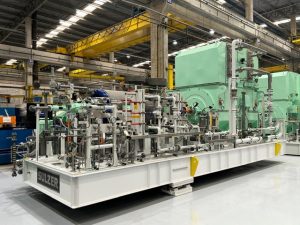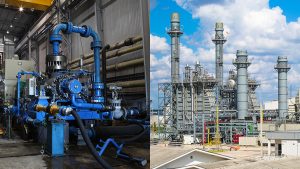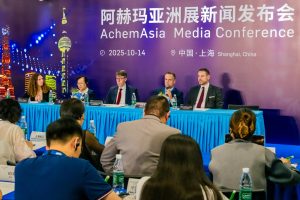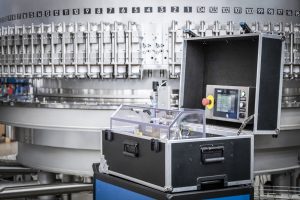IoT condition monitoring in the process industry
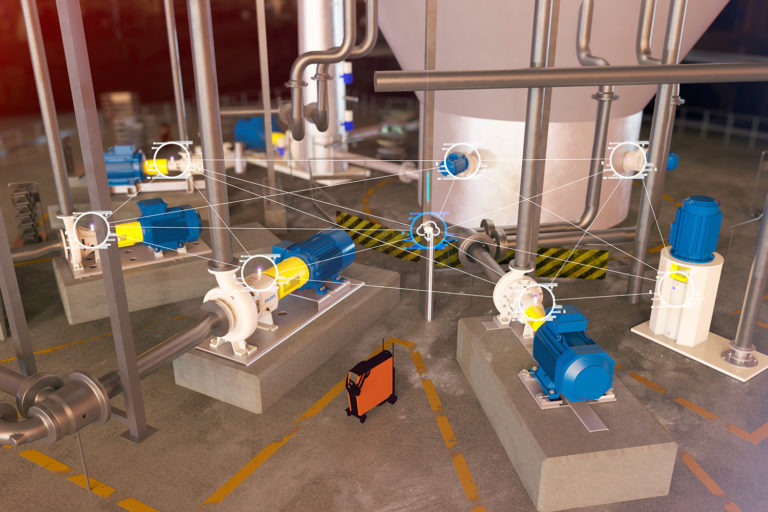
Wireless sensors attached to the equipment measure temperature and vibration in three axes and send the data to the cloud service via a gateway. (Image source: Sulzer)
This is commonly referred to as ‘condition monitoring’ and achieved by measuring and trending operational parameters such as bearing unit temperature and vibration that give an indication of the asset’s condition.
The challenge
Until recently, automation of measurements and their subsequent analysis have proven cost-prohibitive. For this reason, only the most critical applications have been monitored and less critical equipment are still measured manually today. This has several disadvantages, namely:
- Manual measurements are taken infrequently. In the worst case, problems are not identified early enough, and this may cause unwished downtime of the process in question.
- Not all equipment is running 24/7. In such cases scheduling of manual measurement itself is a challenge, and single measurements may give the wrong picture of the condition of the equipment.
- Safety aspects need to be considered. The personnel must access installation areas that might include a safety risk.
With a manual approach, at best, the end user gathers snapshots of their assets’ behavior. Worst case, these manually taken measurements are recorded ad-hoc into documents or paper, and not entered into a system that allows deeper analysis of operating trends. An important opportunity to see underlying patterns and predict pending asset issues is lost.
Service-oriented approach
Driven by the usual suspects of the Industry 4.0 transformation, namely the advent of ubiquitous and cheaper sensor technology, coupled with advancement in telecoms and cloud computing, enormous opportunities arise to generate useful operational data from these assets in a cost-effective manner.
By leveraging IoT devices instead of traditional automated monitoring approaches that require a high level of financial investment, we are driving a democratization of condition monitoring.
As digital sensors become cheaper and more equipment is connected to the Internet (Internet of Things, IoT), there is an ongoing potential to convert data from the devices into actionable business insights. This can be translated into optimized predictive maintenance and maximized uptime of the process in question.
Today, the technology involved is becoming more affordable. It is easy and cost-efficient to deploy for new equipment or to retrofit in existing installations. This is particularly attractive in general industry, such as pulp and paper mills as well as the sugar, food, and fertilizer industries, where configured pumps have traditionally not been equipped with such options.
Sulzer, in collaboration with Finnish technology leaders, has designed a wireless IoT condition monitoring solution, Sulzer Sense, that targets these users’ needs.
The solution includes wireless sensors that can be attached to a pump, agitator, motor or any rotating equipment. The sensors measure temperature and vibration and send the data to the cloud. This means that the operating status of the equipment can be remotely monitored 24 hours a day, seven days a week through Sulzer’s online service. No onerous manual measurement is needed.
Sulzer’s online service is a cloud-based platform. It is easy to use and offers various value-added services. Customers have secure access to the latest equipment data and related services, as well as technical product documentation and drawings.
With the service, you can track the condition of your product, view the equipment trend data, identify spare parts, check spare parts availability, place an order or view your order sta- tus. Sulzer’s online service helps our customers to increase productivity, efficiency and cost savings by automating the data-driven insight processes.
Learnings
Because the product is highly innovative, the team learned much throughout the R&D process, the industrialization of the product, and the ongoing operational model. Key learnings were mainly on the management of the project, which required numerous skillsets from across the company, as well as co-ordination and communication across multiple vendors to allow for ongoing improvements to design.
Vital to the success of the IoT condition monitoring project was the stewardship from within the business to identify and leverage these different skills, while at the same time gaining insight from key customers with the features that add value for their business efforts.
Source: Sulzer Ltd.

